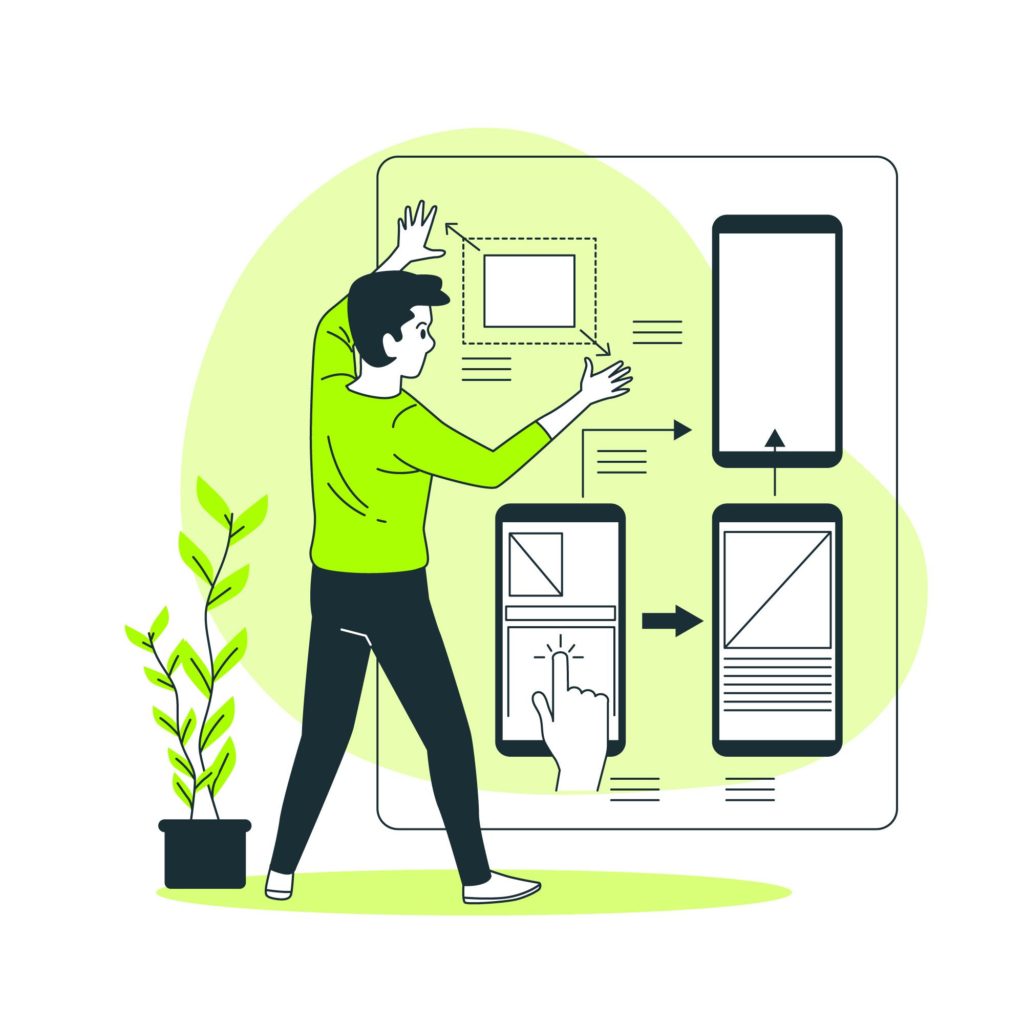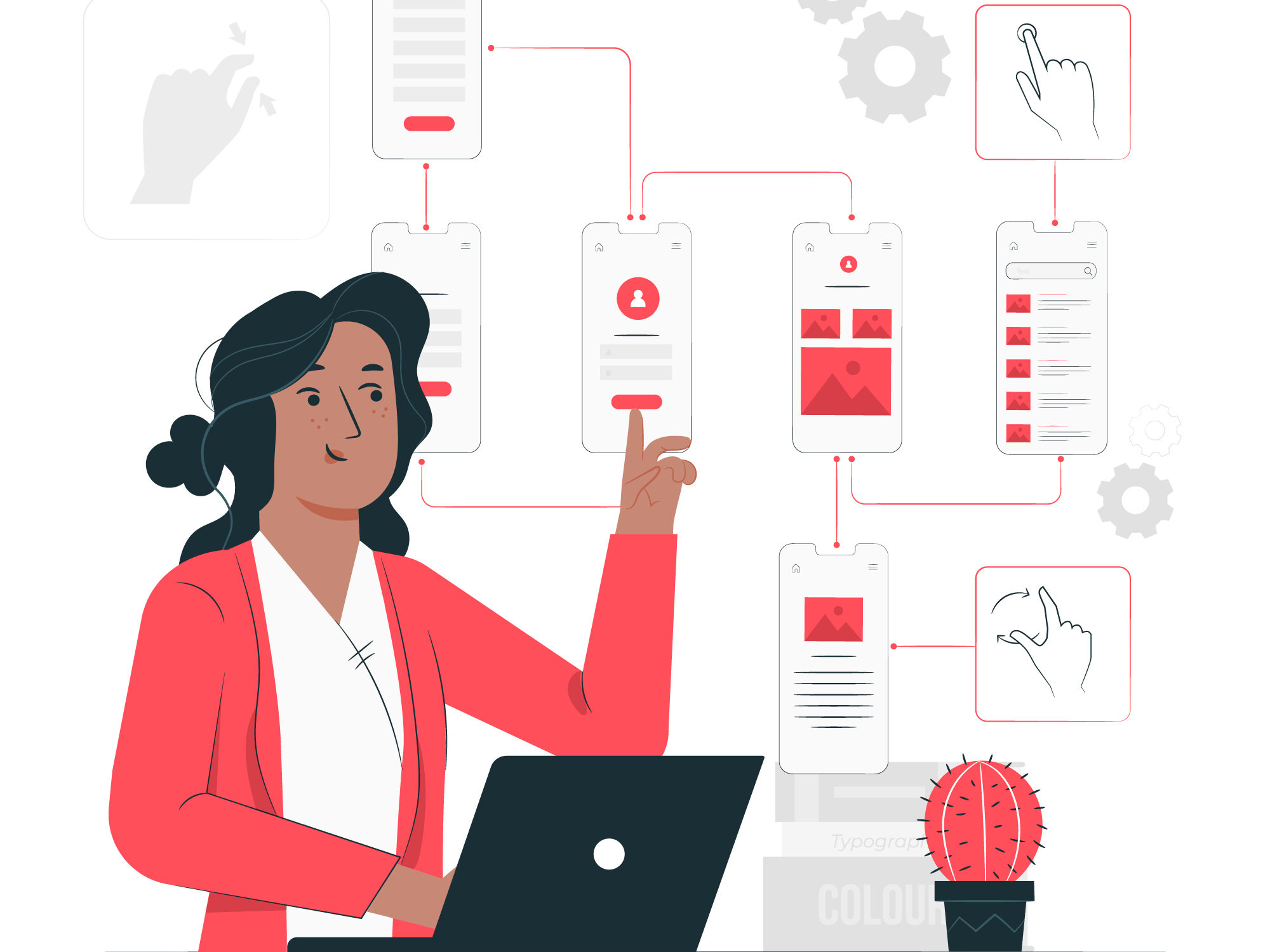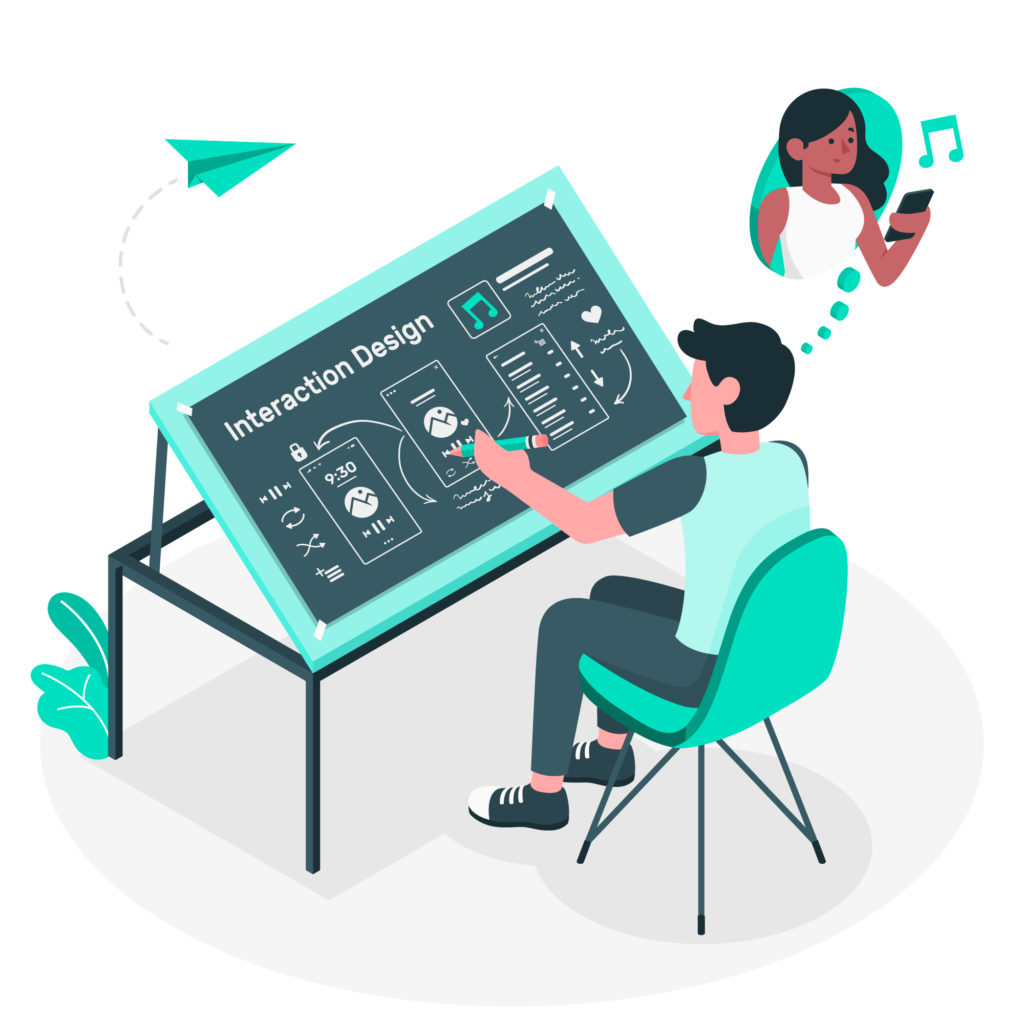
| English | Polish |
|---|---|
Interaction design, IxD, can be understood in simple (but not simplified) terms: it is the design of the interaction between users and products. Most often when people talk about interaction design, the products tend to be software products like apps or websites. The goal of interaction design is to create products that enable the user to achieve their objective(s) in the best way possible. | Projektowanie interakcji, IxD, może być rozumiane w prosty (ale nie uproszczony) sposób: jest to koncepcja interakcji między użytkownikami a produktami. Najczęściej, gdy mówi się o projektowaniu interakcji, produktem jest zazwyczaj oprogramowanie, jak aplikacje lub strony internetowe. Celem projektowania interakcji jest tworzenie produktów, które umożliwiają użytkownikowi osiągnięcie jego celu lub celów w najlepszy możliwy sposób. |
If this definition sounds broad, that’s because the field is rather broad: the interaction between a user and a product often involves elements like aesthetics, motion, sound, space, and many more. And of course, each of these elements can involve even more specialised fields, like sound design for the crafting of sounds used in user interactions. | Jeśli ta definicja wydaje się szeroka, to dlatego, że pole jest dość szerokie: interakcja między użytkownikiem a produktem często obejmuje elementy takie, jak estetyka, ruch, dźwięk, przestrzeń i wiele innych. Oczywiście każdy z tych elementów może zawierać jeszcze węższe specjalizacje, takie jak projektowanie dźwięków do interakcji z użytkownikiem. |
As you might already realise, there’s a huge overlap between interaction design and UX design. After all, UX design is about shaping the experience of using a product, and most part of that experience involves some interaction between the user and the product. But UX design is more than interaction design: it also involves user research (finding out who the users are in the first place), creating user personas (why, and under what conditions, would they use the product), performing user testing and usability testing, etc. | Jak już być może zdajesz sobie sprawę, projektowanie interakcji w znacznym stopniu pokrywa się z projektowaniem UX. W końcu projektowanie UX polega na kształtowaniu wrażeń związanych z użytkowaniem produktu, a większość z nich wiąże się z interakcją pomiędzy użytkownikiem a produktem. Projektowanie UX to jednak coś więcej niż tylko projektowanie interakcji: obejmuje również badanie użytkowników (ustalenie przede wszystkim, kim oni są), tworzenie person (dlaczego i w jakich warunkach będzie wykorzystywany produkt), przeprowadzanie badań użytkowników, testów użyteczności itp. |
The 5 dimensions of interaction design
| English | Polish |
|---|---|
The 5 dimensions of interaction design is a useful model to understand what interaction design involves. | Pięć wymiarów projektowania interakcji jest użytecznym modelem pozwalającym zrozumieć, na czym ono polega. |
1D: Words Words – especially those used in interactions, like button labels – should be meaningful and simple to understand. They should communicate information to users, but not too much information to overwhelm the user. | 1D: Słowa Słowa – zwłaszcza te używane w interakcjach, takie jak etykiety przycisków – powinny nieść ze sobą znaczenie i być łatwe do zrozumienia. Powinny przekazywać informacje, ale nie za dużo, aby nie przytłoczyć użytkownika. |
2D: Visual representations This concerns graphical elements like images, typography and icons that users interact with. These usually supplement the words used to communicate information to users. | 2D: Wizualne reprezentacje Dotyczą one elementów graficznych, jak obrazy, typografia i ikony, z których korzystają użytkownicy. Zazwyczaj uzupełniają one słowa wykorzystywane do przekazywania informacji użytkownikom. |
3D: Physical objects or space Through what physical objects do users interact with the product? A laptop, with a mouse or touchpad? Or a smartphone, with the user’s fingers? And within what kind of physical space does the user do so? For instance, is the user standing in a crowded train while using the app on a smartphone, or sitting at a desk in the office surfing the website? These all affect the interaction between the user and the product. | 3D: Obiekty fizyczne lub przestrzeń Za pomocą jakich obiektów fizycznych użytkownicy wchodzą w interakcję z produktem? Myszy lub touchpada w laptopie? Palców na smartfonie? W jakiej przestrzeni fizycznej użytkownik to robi? Na przykład, czy użytkownik stoi w zatłoczonym pociągu podczas korzystania z aplikacji na smartfonie, czy też siedzi przy biurku w biurze i surfuje po internecie? To wszystko ma wpływ na interakcję między użytkownikiem a produktem. |
4D: Time While this dimension sounds a little abstract, it mostly refers to media that changes with time (animation, videos, sounds). Motion and sounds play a crucial role in giving visual and audio feedback to users’ interactions. Also of concern is the amount of time a user spends interacting with the product: can users track their progress, or resume their interaction some time later? | 4D: Czas Choć wymiar ten brzmi nieco abstrakcyjnie, odnosi się głównie do mediów, które zmieniają się w czasie (animacje, filmy, dźwięki). Ruch i dźwięki odgrywają kluczową rolę w przekazywaniu wizualnych i dźwiękowych informacji zwrotnych w interakcji z użytkownikami. Znaczenie ma również czas, jaki użytkownik spędza na interakcji z produktem: czy może śledzić swoje postępy lub wznowić interakcję po pewnym czasie? |
5D: Behaviour This includes the mechanism of a product: how do users perform actions on the website? How do users operate the product? In other words, it’s how the previous dimensions define the interactions of a product. It also includes the reactions – for instance emotional responses or feedback – of users and the product. | 5D: Zachowanie Obejmuje mechanizm produktu: jak użytkownicy wykonują działania na stronie? Jak użytkownicy obsługują produkt? Innymi słowy, jest to sposób, w jaki poprzednie wymiary definiują interakcję z produktem. Uwzględnia się również reakcje, na przykład emocje lub informacje zwrotne od użytkowników i produktu. |

Important questions interaction designers ask
| English | Polish |
|---|---|
How do interaction designers work with the 5 dimensions above to create meaningful interactions? To get an understanding of that, we can look at some important questions interaction designers ask when designing for users: | W jaki sposób projektanci interakcji pracują z powyższymi 5 wymiarami, żeby stworzyć sensowne interakcje? Aby to zrozumieć, możemy przyjrzeć się kilku ważnym pytaniom, które projektanci interakcji zadają podczas projektowania dla użytkowników: |
– What can a user do with their mouse, finger, or stylus to directly interact with the interface? This helps us define the possible user interactions with the product. | – Co użytkownik może zrobić z myszą, palcem lub rysikiem, aby bezpośrednio korzystać z interfejsu? To pomaga zdefiniować możliwe interakcje użytkownika z produktem. |
– What about the appearance (colour, shape, size, etc.) gives the user a clue about how it may function? This helps us give users clues about what behaviours are possible. | – A może wygląd (kolor, kształt, rozmiar itp.) podpowiada użytkownikowi, jak może funkcjonować produkt? Pomoże nam to przekazać użytkownikom wskazówki, jakie zachowania są możliwe. |
– Do error messages provide a way for the user to correct the problem or explain why the error occurred? This lets us anticipate and mitigate errors. | – Czy komunikaty o błędach stanowią dla użytkownika sposób na skorygowanie problemu lub wyjaśnienie, dlaczego błąd wystąpił? To pozwala na przewidywanie i ograniczanie błędów. |
– What feedback does a user get once an action is performed? This allows us to ensure that the system provides feedback in a reasonable time after user actions. | – Jaką informację zwrotną użytkownik otrzymuje po wykonaniu czynności? Pozwala to sprawdzić, czy system dostarcza informacji zwrotnej w rozsądnym czasie po wykonaniu czynności przez użytkownika. |
– Are the interface elements a reasonable size to interact with? Questions like this helps us think strategically about each element used in the product. | – Czy elementy interfejsu mają odpowiednią wielkość do interakcji? Takie pytania pomagają myśleć strategicznie o każdym elemencie użytym w produkcie. |
– Are familiar or standard formats used? Standard elements and formats are used to simplify and enhance the learnability of a product. | – Czy stosowane są znane lub standardowe formaty? Standardowe elementy i formaty są używane w celu uproszczenia i zwiększenia możliwości uczenia się obsługi produktu. |

So what do interaction designers do?
| English | Polish |
|---|---|
Here are some of the tasks interaction designers handle in their daily work: | Oto niektóre z zadań, które projektanci interakcji wykonują w swojej codziennej pracy: |
Design strategy This is concerned with what the goal of a user is, and in turn what interactions are necessary to achieve this goal. Depending on the company, interaction designers might have to conduct user research to find out what the goals of the users are before creating a strategy that translates that into interactions. | Strategia projektowania Wiąże się z celem użytkownika i interakcjami niezbędnymi do jego osiągnięcia. W zależności od firmy, projektanci interakcji być może będą musieli przeprowadzić badania użytkowników, aby dowiedzieć się, jakie są ich cele przed stworzeniem strategii, która przekłada się na interakcje. |
Wireframes and prototypes This again depends on the job description of the company, but most interaction designers are tasked to create wireframes that lay out the interactions in the product. Sometimes, interaction designers might also create interactive prototypes and/or high-fidelity prototypes that look exactly like the actual app or website. | Szkielety i prototypy Również i to zależy od zakresu obowiązków na danym stanowisku pracy w firmie, ale większość projektantów interakcji ma za zadanie tworzenie szkieletów, które przedstawiają interakcje w produkcie. Czasami projektanci interakcji tworzą również interaktywne prototypy i/lub prototypy o dużej dokładności, które wyglądają dokładnie tak, jak rzeczywista aplikacja lub strona internetowa. |
Source of English text: https://www.interaction-design.org/literature/article/what-is-interaction-design
Exercises
Exercise 1.
Answer the questions
- How do you understand interaction design (IxD)?
- What is the goal of IxD?
- Can you name a few elements of IxD?
- What is the difference between UX i IxD?
- What are the elements of visual representation?
- What may affect the interaction between the user and the product?
- What is the role of motion and sounds?
- What can give the user a clue about how the product functions?
- What should error messages contain?
- What do interaction designers do?
Exercise 2.
Exercise 3.
Translate the sentences into English and check if your answer is correct.
- umożliwić użytkownikom osiągnięcie ich celów
- jak już być może zdajesz sobie sprawę
- przekazywać (komunikować) informacje użytkownikom
- w najlepszy możliwy sposób
- odnosić się głównie do
- śledzić postępy